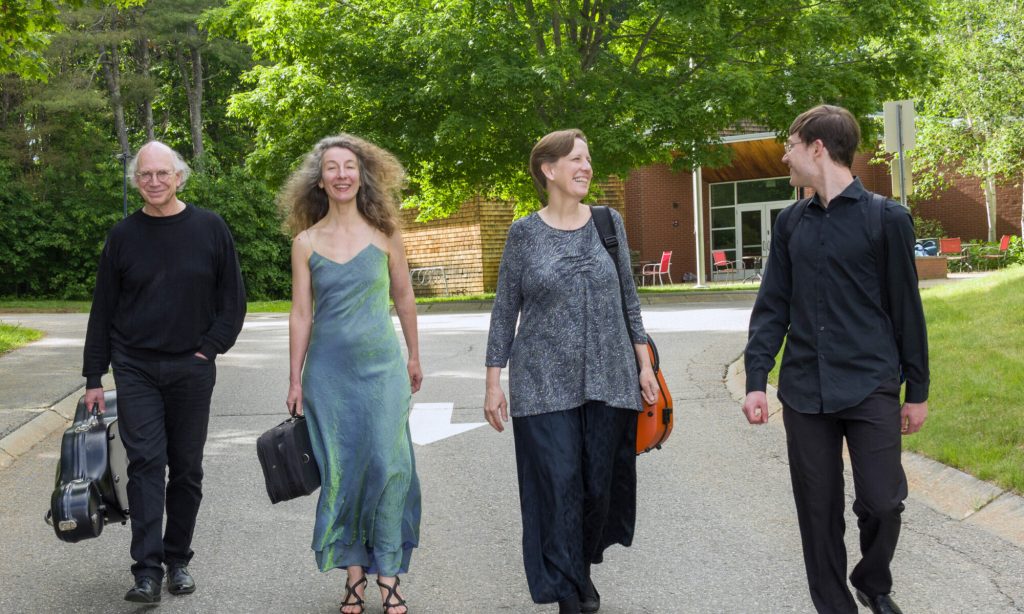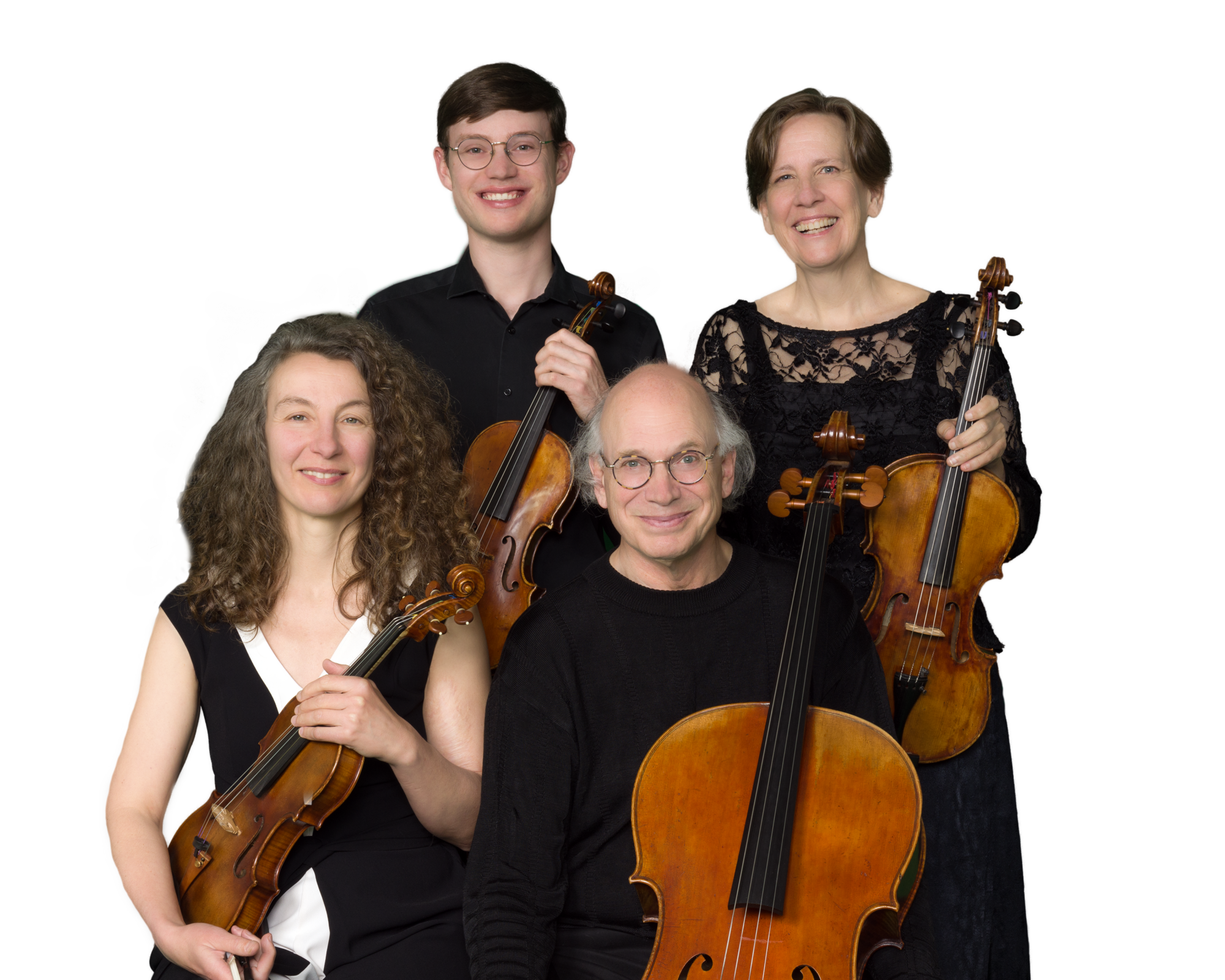THE DaPONTE STRING QUARTET
Celebrating the Music of Haydn, String Quartet in D Opus 20, #4
Korngold, String Quartet #2 in E-Flat Major Opus 26
Ogunquit Performing Arts is delighted to welcome back to Ogunquit, a long time favorite in the area, the Daponte String Quartet. And to welcome our local friends and visitors back to the Ogunquit Baptist Church, which has offered OPA its beautiful sanctuary as an alternative venue during the repair, planned renovation and construction of our new municipal building and S. Judson Dunaway community center.
DSQ’s program will include the String Quartet in D Major, Opus 20, No. 4 by Joseph Haydn, the great Austrian composer who was one of the most important figures in the development of the Classical style in music during the 18th century, helping establish the forms and styles for the string quartet and the symphony. This particular quartet is an example of the dramatic innovations which Haydn introduced, reflecting the influence of the “Sturm und Drang” movement of the era.

Moving forward to the 20th century, DSQ will also play a work by Austria-Hungary composer Erich Korngold who first was well known for his operas, such as Die Tote Stadt (1920). In the ‘30s, he moved to Hollywood to arrange music for film where his background in opera revolutionized cinematic music and won him an Oscar for “The Adventures of Robin Hood.” Written just before he moved to Hollywood, his Quartet No. 2 in E-flat Major, Opus 26, has a lilting Viennese lightness and uses dance forms and touches of impressionism.
Having relocated to Maine 33 years ago from the urban musical center of Philadelphia, where they were co- founded by Ferdinand “Dino” Liva, and Myles Jordan, the DaPonte String Quartet has continued to grow- locally, nationally and internationally with their musical reach and popularity. Known for their inventive interpretations of the works they perform, the Boston Globe noted that “….whatever music they present- be it Renaissance, Baroque, Classical, Romantic, Modern, or Post-Modern- the freshness of DSQ’s performances make these works appear novel and contemporary.” While so many classical musicians struggle to remain relevant in the contemporary music space by performing only new compositions, DSQ’s repertoire has been able to keep chamber music as a vital and alive art form.
Because their work is based on research, scholarship, (see quartet members introduction below) and hundreds of hours of preparation necessary to perform music of such complexity, their performances are grounded in an authority which is not stiff or aloof. Their stage manner among themselves and with their audiences is intimate and conversational. They unselfconsciously share their musical insights with their audiences which enable us to connect with the music in new ways.
They perform and teach all over the world. Their performances have been broadcast over nation-wide radio and television programs in the US and Canada.
They have received awards from but not limited to such prestigious organizations as the National Endowment of the Arts, Chamber Music America, the Music Teachers National Association, and the Maine Arts Commission.
And, some 34 years later, their deeply rooted relationship in Maine fuels their pride to call Maine home, and Maine’s pride that they chose to do so. Maine people have embraced DSQ. When they performed at Carnegie Hall, such a large contingent from Maine traveled to cheer them on that the NYT wrote: “Let it not be said that the Daponte String Quartet enters New York musical life without friends. Weill Hall was packed!”
QUARTET MEMBERS (highlights)
Philipp Elssner- Violin
Violinist, violist, and musical theorist.
Joined quartet in 2024.
Based in Northport, Maine.
Education: Bachelor’s from Cleveland Institute of Music, Masters in Music Theory from McGill University.
Other: Master’s Thesis “Groove in the Mix: Spatial Manipulation in Groove-based Popular music, 1970-present.” Taught music theory and musicianship at McGill and Cleveland Institute of Music and to private students at all levels, believing that music is an art form in which everyone should be able to take part.
Kirsten Monke – Viola
Joined Daponte in 2008, which she describes as a serendipitous occurrence, bring her back to her home state of Maine.
Her undergraduate and graduate studies were at Indiana University, and she continued her graduate studies at UC Santa Barbara. For a decade, she was principal violinist for both the Santa Barbara Chamber Orchestra, and the Santa Barbara Symphony. She has taught at UC Santa Barbara, Westmont College, and is currently on the faculty at Bowdoin College and Bay Chamber Music School.
Lydia Forbes- Violin
Performed with Daponte since 2005, living the dream since age 11 of being a member of a string quartet and raising her 3 sons in the beauty of Maine.
Started musical career in the Netherlands, where she also performed with numerous European quartets. Cofounded and toured with Het Zephyr Kwartet, devoted to contemporary music, as well as performing with the Oslo Philharmonic in Norway and the Netherlands Wind Ensemble.
Musical awards from Yale University, among other prestigious international awards.
Myles Jordan- Cello
Cellist, writer, Teacher
Undergraduate studies at the University of Toronto, two further degrees at Julliard, and a Doctorate of Musical Arts from Temple University. Subsequently, he became associate principal cellist of the Concerto Soloists Chamber Orchestra of Philadelphia, before founding the Daponte String Quartet.
He has taught at Temple University, Wilkes University, and the University of North Texas.
Myles best describes the work of Daponte through his eyes: “ Because music is a language, the driving impetus…is to create greater awareness of historical, social, political and philosophical contexts it’s created.” He describes his own aim as “to draw as many human connections as possible between contemporary audiences and great composers.”
